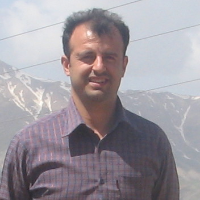The Effects of Long-term Grazing Management on Vegetation and Some Soil Characteristics (A Case Study: Hamzavi Research Station in Hanna- Semirom, Isfahan)
Author(s):
Abstract:
Evaluating the possible relationships between vegetation and environmental characteristics can assist managers to identify effective factors influencing plants establishment and to characterize various vegetation communities. This study was aimed to evaluate the effects of long term grazing exclusion ( more than 33 years) and the controlled grazing system (resting – rotation grazing system) on the vegetation distribution and some soil properties in the Hamzavi research station in Hanna area-Semirom, Isfahan. Six transects (three parallel transects and three transects perpendicular to the general slope of the area) were established in each area and 10 square plots with the size of 2m2 were placed along each transect; then, the cover percentage, production and list of all plant species were recorded. In each area, eighteen plots were collected randomly and in each plot, five soil samples were collected from 0-30 cm of the soil and then the samples were mixed and one sample of the compound was selected as an evidence plot. Soil properties such as pH, EC, CaCO3, organic carbon, absorbable phosphor, total nitrogen, K, Ca, Mg, soil saturated percentage, cation exchange capacity, soil clay, silt, sand and fine sand contents were measured in the soil laboratory. The independent t test was used to compare the vegetation characteristics in two areas. Cation exchange capacity, CaCO3, gravel percentage, soil phosphor content and grazing management were identified as the most discriminative factors in separating vegetation communities based on Canonical correspondence analysis (CCA) and cluster analysis. Controlled grazing management significantly modified some soil characteristics and increased the production (352 versus 184.2 kg/ha) and vegetation cover percentage (25.46 versus 18.37), as compared to the exclusion area (α= 5%). The vegetation density was increased significantly in the exclusion rather than controlled grazing area (3.03 versus 2.02 plant/m2). This study, therefore, revealed that controlled grazing management was more effective on improving some soil quality and vegetation characteristics rather than p long term grazing exclusion in the semi-arid ecosystems. So, avoiding long term grazing exclusion in semi-arid rangelands is suggested.
Keywords:
Language:
Persian
Published:
Journal of Hydrology and Soil Science, Volume:22 Issue: 4, 2019
Pages:
15 to 27
magiran.com/p1943907
دانلود و مطالعه متن این مقاله با یکی از روشهای زیر امکان پذیر است:
اشتراک شخصی
با عضویت و پرداخت آنلاین حق اشتراک یکساله به مبلغ 1,390,000ريال میتوانید 70 عنوان مطلب دانلود کنید!
اشتراک سازمانی
به کتابخانه دانشگاه یا محل کار خود پیشنهاد کنید تا اشتراک سازمانی این پایگاه را برای دسترسی نامحدود همه کاربران به متن مطالب تهیه نمایند!
توجه!
- حق عضویت دریافتی صرف حمایت از نشریات عضو و نگهداری، تکمیل و توسعه مگیران میشود.
- پرداخت حق اشتراک و دانلود مقالات اجازه بازنشر آن در سایر رسانههای چاپی و دیجیتال را به کاربر نمیدهد.
دسترسی سراسری کاربران دانشگاه پیام نور!
اعضای هیئت علمی و دانشجویان دانشگاه پیام نور در سراسر کشور، در صورت ثبت نام با ایمیل دانشگاهی، تا پایان فروردین ماه 1403 به مقالات سایت دسترسی خواهند داشت!
In order to view content subscription is required
Personal subscription
Subscribe magiran.com for 70 € euros via PayPal and download 70 articles during a year.
Organization subscription
Please contact us to subscribe your university or library for unlimited access!



